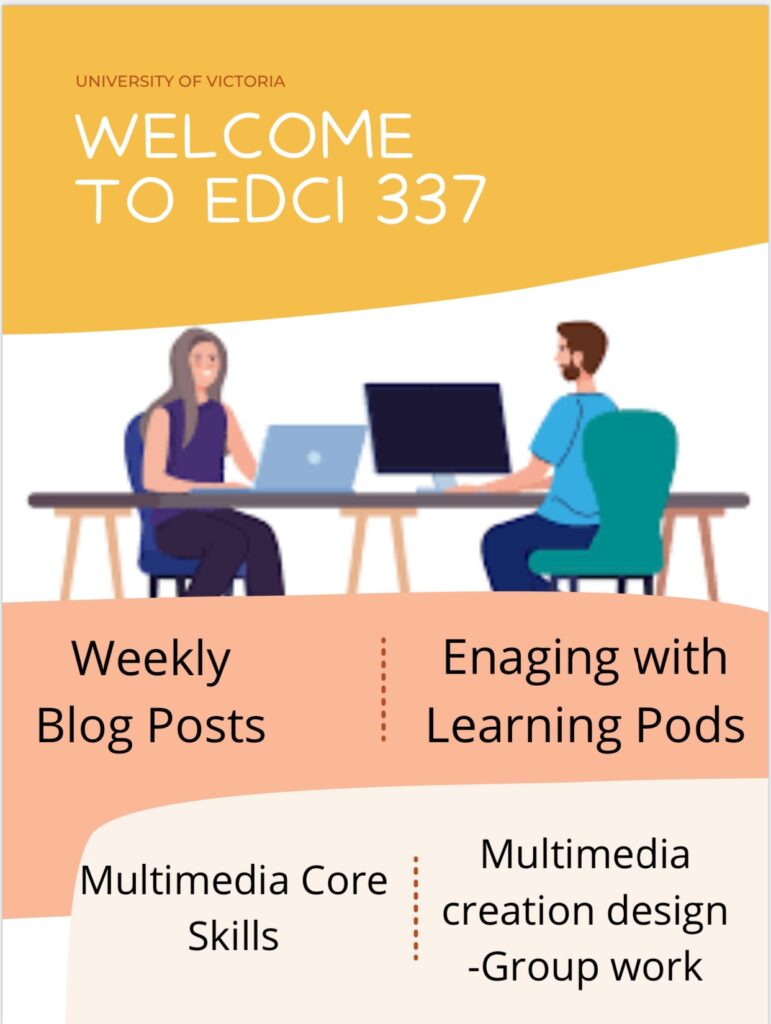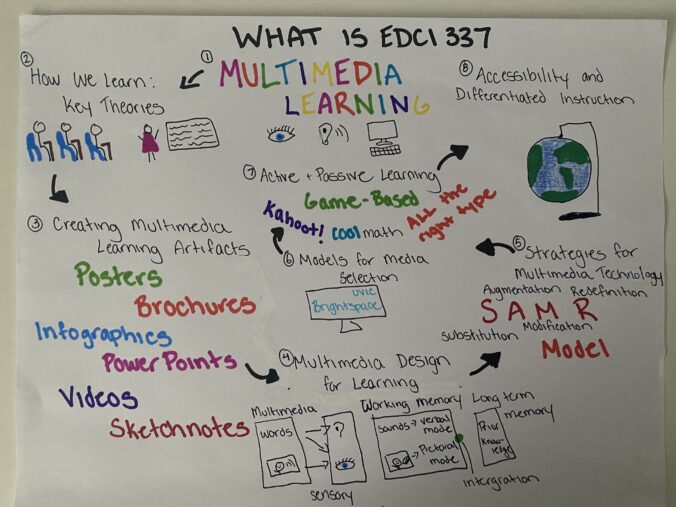Earlier this semester, I created a poster using Canvas. The purpose of my poster is to advertise EDCI 337. I added the four main assignments so students can gain an understanding of what the course is. The poster has simply so it is easy to follow with little text to understand the main points.

After learning more multimedia tools and learning theories, I knew I could improve my poster. My poster only delivers information in a visual mode which may not be beneficial to some readers. Mayer (2005) emphasizes the Cognitive Theory of Multimedia learning, which is using both words and pictures to deliver the information. Since my poster only has few words and one picture, there can be a lot of confusion and misunderstanding. Thus, I created a sketch note screencast to further explain my poster.
In my own experiences, sketch notes help me understand concepts and material the best. It normally flows well, and it is easy to follow along. The sketch note highlights key words, and often uses pictures that relate. In addition, sketch note videos provide additional information using their own words. In my sketch note, there are many different learning methods to reach the learning outcome. I added written words, pictures, and voice over to explain the information in many different ways. My multimedia creation will allow the learner’s sensory memory to see or hear the material. From there, the sounds or images can go to one’s working memory and possibly integrate to the long-term memory. My sketch note without a video, would eliminate hearing and sounds which could affect the information getting to one’s sensory memory. In addition, my sketch note may not make sense without the audio explaining each step.
Moreover, when I created the sketch note, I was using active learning. I was able to use passive learning by reading and watching the links provided each week. Then, I used active learning my applying the information to this sketch note. I have a better understanding on what the class is about, and the learning outcomes multimedia provides. As a future teacher, I want to continue to create these videos as other people’s sketch notes videos have helped me clarify any confusion.
References
Mayer, R. E. (2005). Cognitive Theory of Multimedia Learning. In R. E. Mayer (Ed.), The Cambridge handbook of multimedia learning (pp. 31–48). Cambridge University Press. https://doi.org/10.1017/CBO9780511816819.004
